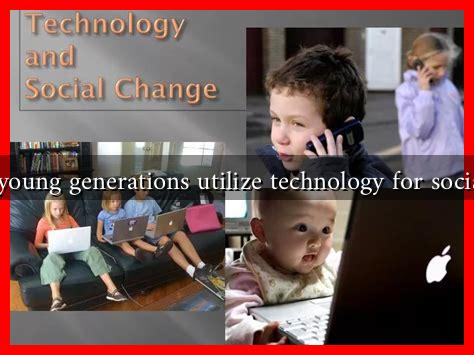-
Table of Contents
How Do Young Generations Utilize Technology for Social Change?
In an era defined by rapid technological advancement, young generations are harnessing the power of technology to drive social change like never before. From social media campaigns to innovative apps, the youth are not just passive consumers of technology; they are active participants in shaping a better world. This article explores the various ways young people are utilizing technology to advocate for social justice, environmental sustainability, and community engagement.
The Power of Social Media
Social media platforms have become a vital tool for young activists. They provide a space for individuals to share their stories, mobilize support, and raise awareness about pressing issues. Here are some key ways social media is being used for social change:
- Awareness Campaigns: Platforms like Instagram and Twitter allow users to create and share content that highlights social issues. For instance, the #BlackLivesMatter movement gained significant traction on social media, leading to global protests and discussions about racial injustice.
- Fundraising: Young activists often use social media to raise funds for various causes. Crowdfunding platforms like GoFundMe and Kickstarter have been instrumental in supporting grassroots initiatives.
- Community Building: Social media fosters connections among like-minded individuals, creating communities that can mobilize quickly for a cause. The youth can organize events, share resources, and provide mutual support.
Innovative Apps and Platforms
Beyond social media, young generations are developing and utilizing apps that facilitate social change. These technological innovations often address specific societal issues:
- Environmental Action: Apps like “Oceans” allow users to track their carbon footprint and engage in eco-friendly practices. Young people are using these tools to promote sustainability and environmental awareness.
- Health and Well-being: Mental health apps such as “Headspace” and “Calm” are being promoted by young advocates to address mental health issues, particularly among their peers.
- Political Engagement: Platforms like “Rock the Vote” help young people register to vote and stay informed about political issues, encouraging civic participation.
Case Studies of Successful Movements
Several movements led by young people exemplify the effective use of technology for social change:
- Greta Thunberg and the Climate Strikes: The Swedish climate activist Greta Thunberg utilized social media to inspire millions of young people worldwide to participate in climate strikes. Her “Fridays for Future” movement has mobilized students globally, emphasizing the urgency of climate action.
- March for Our Lives: Following the tragic shooting at Marjory Stoneman Douglas High School in 2018, students organized the March for Our Lives movement. They effectively used social media to rally support for gun control, resulting in significant national conversations and policy proposals.
- Me Too Movement: The #MeToo movement, which gained momentum through social media, has empowered countless individuals to share their experiences with sexual harassment and assault, leading to widespread societal change and accountability.
Statistics Highlighting Youth Engagement
The impact of technology on youth activism is evident in various statistics:
- According to a 2021 Pew Research study, 84% of young adults aged 18-29 reported using social media to engage with political issues.
- A survey by the Harvard Kennedy School found that 60% of young people believe that social media is an effective tool for creating social change.
- The Global Youth Climate Network reported that over 1.4 million young people participated in climate strikes worldwide in 2019, showcasing the power of digital mobilization.
Conclusion
Young generations are redefining activism through technology, utilizing social media, innovative apps, and community engagement to advocate for social change. Their ability to mobilize quickly, raise awareness, and connect with others globally has transformed the landscape of activism. As technology continues to evolve, it will undoubtedly play an even more significant role in empowering youth to address the challenges facing our world. The future of social change is bright, driven by the passion and creativity of young people who are not afraid to use technology as a force for good.
For more insights on youth activism and technology, visit UNA-USA.


